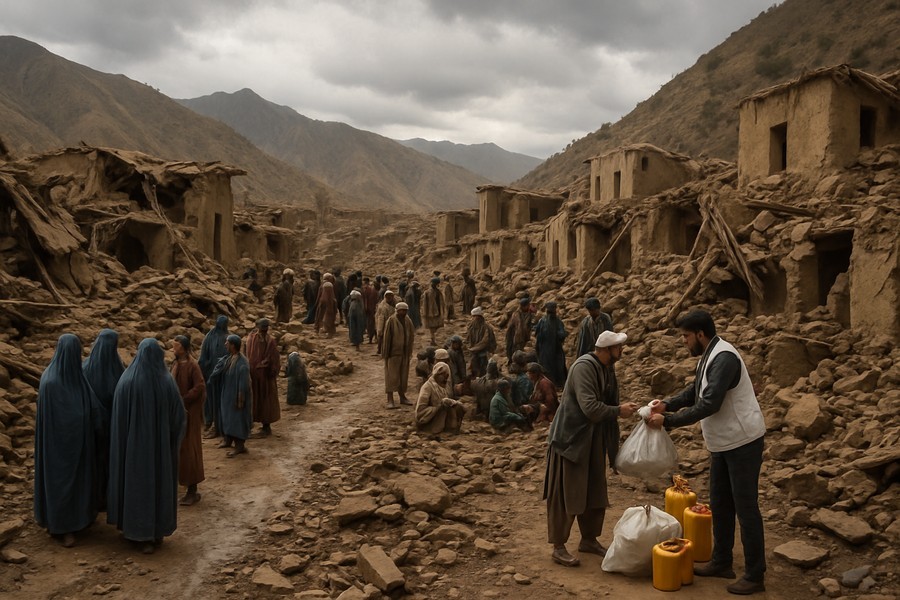
Devastating Earthquake in Afghanistan Stirs Global Response
The current ruling power in Afghanistan has put out a call for international aid after a devastating earthquake wreaked havoc on the country. This disaster has brought further suffering to a nation that was already dealing with major issues including food shortages and a decrease in foreign aid.
The earthquake, with a magnitude of 6.0, brought death and destruction to towns and villages near the border with Pakistan. The total damage includes more than 1,400 fatalities and over 3,000 injuries, as well as the destruction of over 5,400 homes. The quake was also powerful enough to cause significant aftershocks in the nation's capital.
The Struggle for Relief Efforts
The efforts to provide relief to the affected areas have been hindered by various challenges. The severe weather, landslides, and damaged road infrastructure have made these remote mountainous regions difficult to reach. Furthermore, the country's relief capacity has been strained due to recent cuts in aid from the US.
Since the takeover of the country by the current regime, global aid has been dwindling. The harsh laws and penalties imposed on the country's 43 million residents have resulted in a significant decrease in international support.
Key Details about the Earthquake and Rescue Efforts
The earthquake struck just northeast of Jalalabad, a city near the border with Pakistan that is known for its seismic activity. The quake was relatively shallow, which tend to cause more destruction. Damage was also reported in a number of provinces including Laghman, Nuristan, and Panjshir.
Several cities in neighboring Pakistan also felt the impact of the earthquake. Additionally, the region experienced at least five powerful aftershocks following the initial quake. This is just the latest in a series of major earthquakes that have hit Afghanistan, a country already ravaged by a multitude of man-made and natural disasters.
The Human Impact
It is estimated that about half a million people experienced strong to very strong shaking from the earthquake, causing widespread damage to structures not built to withstand such force. The number of casualties is expected to rise, with many injured people still requiring evacuation.
Images from the aftermath of the quake show entire communities buried under debris, as survivors desperately search for loved ones trapped under collapsed homes. Many residents described the terror of being trapped under rubble, including one man from Kunar province who lost his wife and two sons in the disaster.
Global Aid Cuts Impacting Rescue Efforts
The humanitarian crisis in Afghanistan has been exacerbated since the takeover by the current ruling power. Many international aid organizations have withdrawn their support, wary of working with a regime known for its harsh treatment of women and girls. The situation has been worsened by significant cuts in foreign aid, leaving the country with drastically reduced resources to handle crises like this earthquake.
The lack of sufficient funding coupled with the ongoing challenges such as drought, conflict, and the return of refugees, is stretching the country's resources to the limit. The most urgent needs include body bags, basic necessities like clothing and cooking equipment, and hygiene products.
International Assistance in the Midst of Crisis
The plea for international help has been echoed by the ruling power in the country. Despite the challenges, some countries have begun to respond. For example, the United Arab Emirates has dispatched food, medical supplies, and tents, along with a search and rescue team. The UK has pledged new emergency funding, and European leaders have also donated emergency funds and other aid supplies.
China has expressed its readiness to provide disaster relief within its capacity, while India has delivered family tents to Kabul and food aid to Kunar, with promises of more relief to come. The response to this disaster, while not as robust as needed, offers a sliver of hope to the struggling nation.
